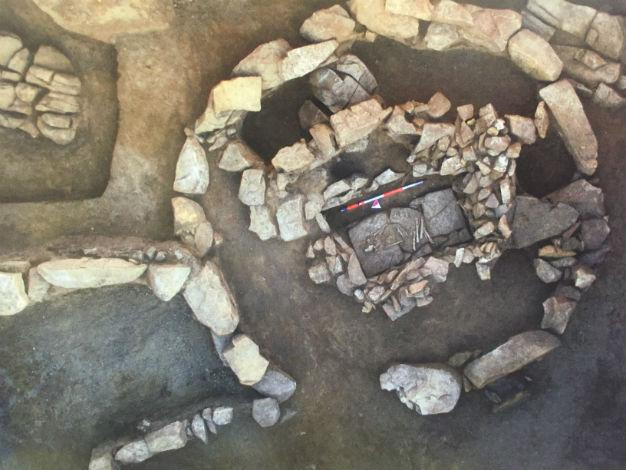Turkey: 5,000-year-old Kurgan tomb of Bronze Age warrior discovered in Istanbul

The oldest Kurgan-style tomb ever unearthed in Turkey has been discovered by experts from the Istanbul Archaeology Museums. The ancient grave contains a skeleton and is 5,000 years old.
Kurgans are types of tumulus grave – they are a circular burial mound heaped over a burial chamber. Such graves first appeared in the steppes at the north to the Black Sea and can be found in countries such as Ukraine, Russia, Bulgaria and Romania.
Excavation work on the recently discovered tomb started in December 2015 in the Istanbul's Silivri district, according to Turkish newspaper Hurriyet Daily News.
Soldier in foetal position
The tomb was completely unearthed this May, and is the oldest of this kind uncovered in Turkey. It is also more complete than previous tombs that were found. Indeed, although it shows signs of having been looted in the past, the thieves did not reach the main burial chamber.
This makes it particularly valuable for archaeologists. "This discovery is interesting for many reasons. The tomb appears to be much older than the ones found previously. It seems to date back to the Early Bronze Age, around 3000 BC and not 1000 BC or later. Also, it is intact which is not the case with most of the other Kurgan tombs, which will make research inside it much more productive", Roger Matthews, Professor of Near Eastern Archaeology at the University of Reading, told IBTimes UK.
Even more interesting perhaps was the discovery of a skeleton resting in the tomb, in a foetal position. There are two potential explanations which justify this posture: either it was done to stop the deceased from rising from the grave or it was intended to help him enter the afterlife as a newborn.
The deceased was also buried with a spear and two pots which archaeologists have dated back to the Bronze Age. According to them, this shows he was probably an important warrior.
What we can learn from the discovery
Further examination of the objects and skeletal remains holds great potential to better understand the history of the region during the Bronze Age. In-depth examination of the objects for example could be a good way to understand how people lived at the time.
Analysis of skeletal remains could prove decisive in understanding population movements and relationships.
"We can learn many things from the tomb and in particular from the skeletal remains. DNA analysis will allow us to learn about the mobility of populations at the time, this individual's kinship, and how his DNA connects to that of modern people of the region or elsewhere", concludes Matthews.
"Isotope analysis of the teeth will also be useful to help us understand where he came from, because the local environment and geology can leave traces in the teeth enamel. We could also learn about his diet from the same methods: for example whether he ate a lot of fish or meat".
© Copyright IBTimes 2025. All rights reserved.






















